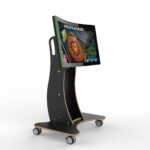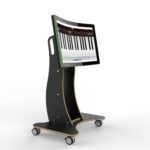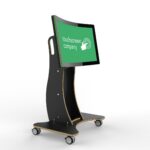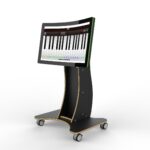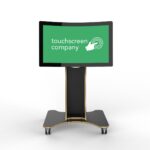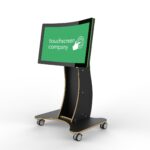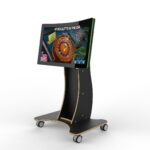Touch Screen for Nurseries: Top Features Explained
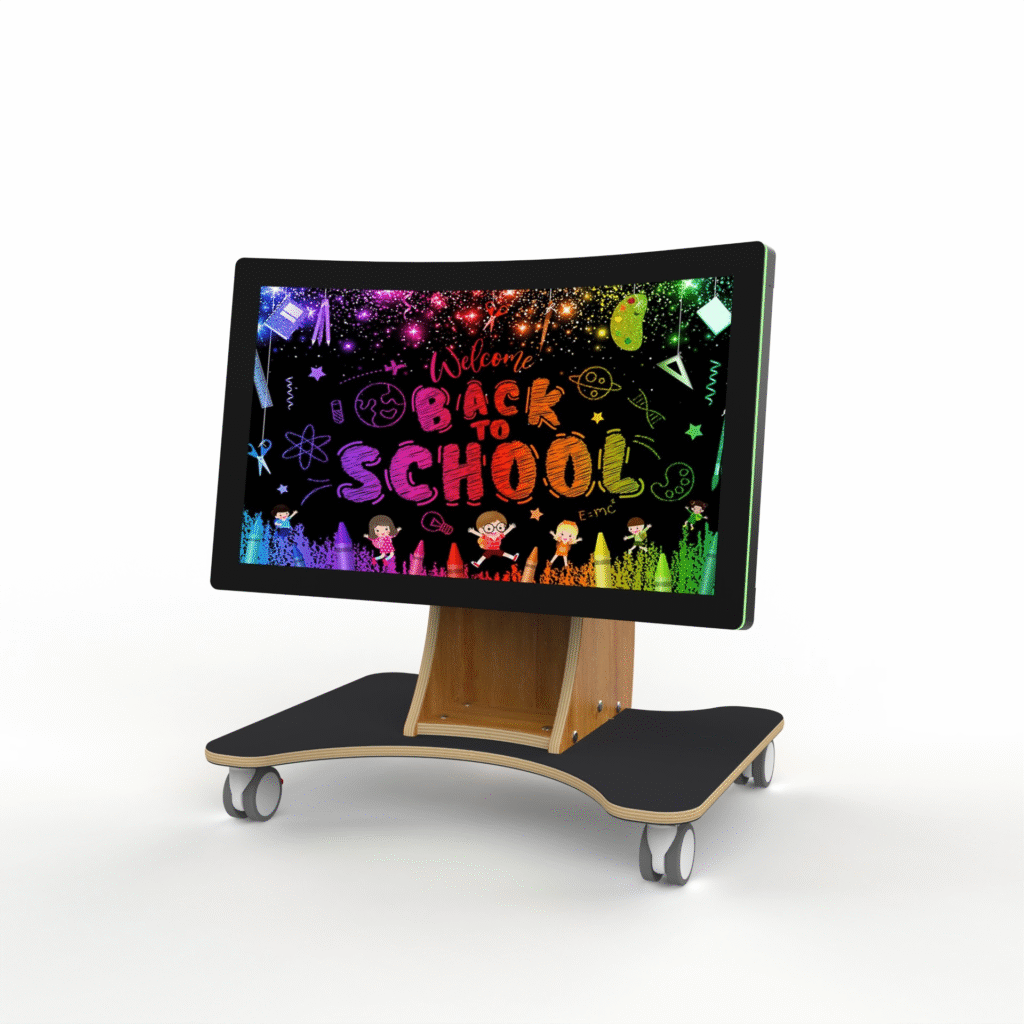
Table of Content
- What is a touchscreen for nurseries, and how does it work?
- 5 Ways a Touch Screen for Nurseries Can Boost Early Learning
- How do touch screen tables encourage group play and collaboration?
- 4 Surprising Benefits of Touch Screens in Nursery Classrooms
- Is it safe for young children to use touchscreen devices daily?
- FAQs
- Conclusion
A touch screen for nurseries makes learning fun and interactive, helping children develop skills through engaging games and activities tailored to their needs.
Creating the right learning environment for young children is key to their growth and happiness. In nurseries, a touch screen for nurseries plays an important role by making learning interactive and engaging. Just like maintaining the perfect room temperature helps keep a newborn comfortable, using the right technology ensures children stay focused and inspired.
With touchscreens, kids can explore, play, and learn in a way that suits their needs, helping build confidence and creativity from an early age.
What is a touchscreen for nurseries, and how does it work?
A touch screen for nurseries is an interactive device designed to engage young children in learning through direct touch. It allows children to interact with educational apps, games, and activities by simply tapping, swiping, or dragging their fingers on the screen. These touchscreens are made with durable materials and safe designs to withstand everyday use by little hands.
The technology behind a touch screen for nurseries uses sensors that detect touch inputs and translate them into commands, making it easy for children to navigate and explore content independently. This hands-on approach helps develop fine motor skills, encourages creativity, and supports early learning in a fun and accessible way tailored for nursery environments.
5 Ways a Touch Screen for Nurseries Can Boost Early Learning
Early childhood is a key time for growth and development. Giving children the right tools can make learning both fun and meaningful. A touch screen for nurseries is more than just a piece of technology.
It’s an interactive way to support curiosity, communication, and confidence in young learners. Here are five ways it can boost early learning in nursery settings:
Interactive Learning Through Play
Children learn best through play. A touch screen for nurseries offers games and activities that spark imagination, encourage problem-solving, and make learning feel like fun rather than work.
Supports All Types of Learners
Some children learn by seeing, others by hearing, or by doing. Touch screens include visual, audio, and hands-on content to suit all learning styles. They also provide extra support for children with special educational needs (SEND).
Builds Digital Confidence Early
Introducing children to technology early helps them feel comfortable using it. Touch screens are simple to navigate, giving children a safe and age-appropriate way to explore the digital world.
Boosts Motor Skills
Tapping, swiping, and dragging help children improve fine motor skills and hand-eye coordination. These movements are essential for daily tasks like writing, holding cutlery, and dressing themselves.
Custom Learning for Every Child
With a wide range of apps available, each nursery can tailor content to meet different developmental stages and interests. This personalized approach keeps learning relevant and rewarding for every child.
How do touch screen tables encourage group play and collaboration?
Touchscreen tables for nurseries create shared learning experiences that bring children together in a fun and engaging way. Here’s how they help promote group play and collaboration:
Multi-touch functionality
The large screen allows several children to interact at once, making it perfect for team games, puzzles, or drawing together.
Encourages communication
Group activities on the table naturally lead to conversations, turn-taking, and problem-solving as children work toward a common goal.
Builds social skills
Shared tasks teach cooperation, patience, and respect for others’ ideas—key elements of early childhood development.
Supports peer learning
Children learn from one another as they explore content together, often helping and teaching each other along the way.
Creates a sense of community
Whether they’re playing a quiz, matching shapes, or making music, touch screen tables help children feel connected and included in group learning.
4 Surprising Benefits of Touch Screens in Nursery Classrooms
When we think of nursery classrooms, we often picture storybooks, crayons, and building blocks. But in today’s digital age, touch screens for nurseries are quickly becoming just as essential. More than just a screen, these interactive tools are transforming how young children learn and grow in fun and surprising ways.
Here are four unexpected benefits of adding touch screens to your nursery classroom:
Encourages Social Learning
You might assume screens isolate children, but touch screens for nurseries promote teamwork. Many apps are designed for group activities, encouraging children to take turns, share ideas, and solve problems together.
Creates Calming Sensory Experiences
For children who may struggle with sensory regulation or attention, touchscreen apps can be a soothing option. Gentle music, calming visuals, and simple touch-based interactions can help create a peaceful learning moment during a busy day.
Supports Language Development
Interactive storybooks, phonics games, and speech-focused apps make language learning more engaging. Touch screens provide a fun, hands-on way to introduce new words, sounds, and sentence structures—especially helpful for early learners and children with delayed speech.
Builds Independence and Confidence
Touch screens are intuitive, even for toddlers. Children quickly learn how to navigate apps on their own, giving them a sense of independence. This builds confidence in their choices and reinforces their natural curiosity.
Is it safe for young children to use touchscreen devices daily?
It’s a common question among parents and educators: is daily use of touchscreens safe for young children? When thoughtfully introduced and supervised, a touch screen for nurseries can be a healthy and helpful part of a child’s learning journey.
What matters most is how the device is used. Touchscreens designed for nursery settings focus on educational content, interactive games, and creative play that support early development. Unlike passive screen time like television, these devices encourage children to think, move, and engage with the world around them.
When included as part of a balanced routine alongside physical play, rest, and social interaction, a touch screen for nurseries can support learning in a safe and age-appropriate way. With the right guidance, children benefit from the stimulation and skills these devices offer while staying active and connected to real-world experiences.
FAQs
Which type of touchscreen is best?
The best type of touch screen for nurseries is a durable, responsive, and easy-to-clean multi-touch screen that supports interactive learning and is safe for young children.
What are the three types of touch screens?
The three types of touch screens are resistive, capacitive, and infrared, each using different technology to detect touch input.
What are the disadvantages of a touch screen monitor?
Touch screen monitors can sometimes cause distractions and may lead to increased screen time, which could affect children’s focus and physical activity. They also require regular cleaning to keep the screen responsive and clear
Are touch screens expensive?
Touch screens for nurseries come in a range of prices to fit different budgets, and investing in quality interactive tables can provide great value through enhanced learning and engagement.
What is the lifespan of a touch screen?
The lifespan of a touch screen typically ranges from 5 to 7 years, depending on usage and care. With proper maintenance, it can provide reliable performance throughout this period.
Are touch screens LCD or LED?
Touch screens can use either LCD or LED technology, with LED being a type of LCD that offers better brightness and energy efficiency.
Can a touch screen be repaired?
Yes, a touch screen can usually be repaired or replaced depending on the damage, and many suppliers offer support and service for touchscreen tables used in nurseries and care homes.
Conclusion
Incorporating a touch screen for nurseries brings learning to life, making education interactive, fun, and accessible for every child.
With engaging apps and sensory activities, these screens support early development and creativity, helping little learners build confidence and skills in a way that feels natural and enjoyable.

